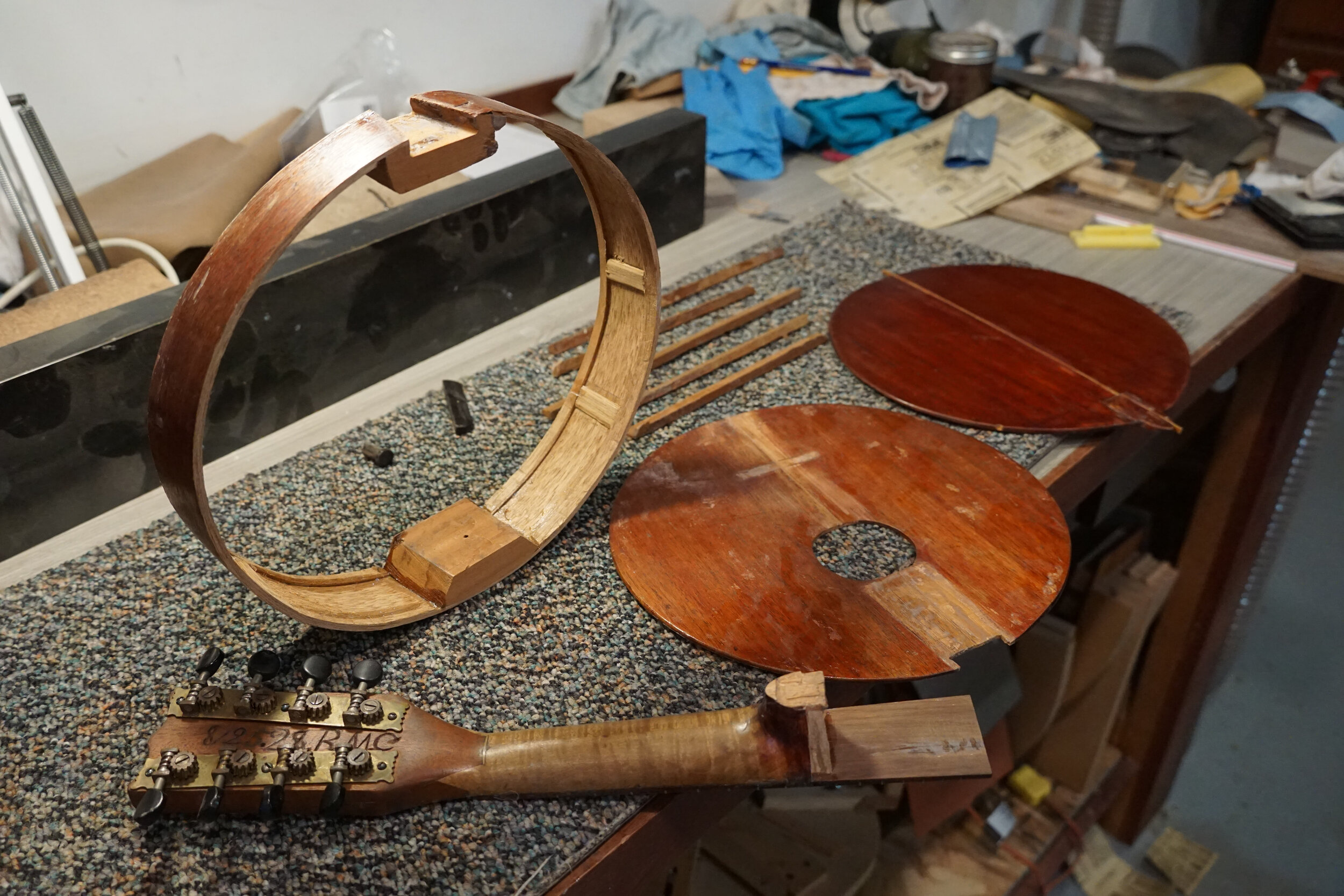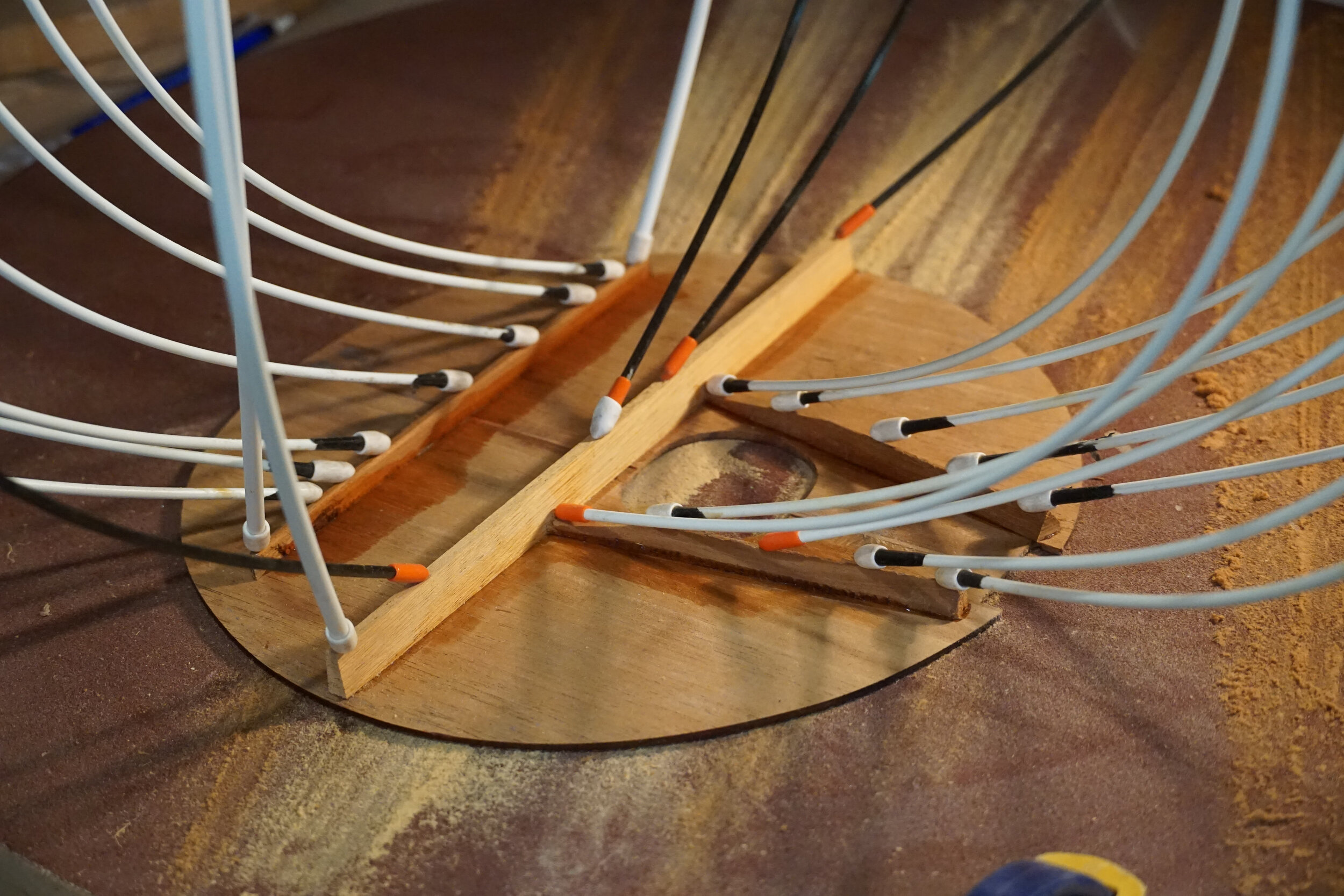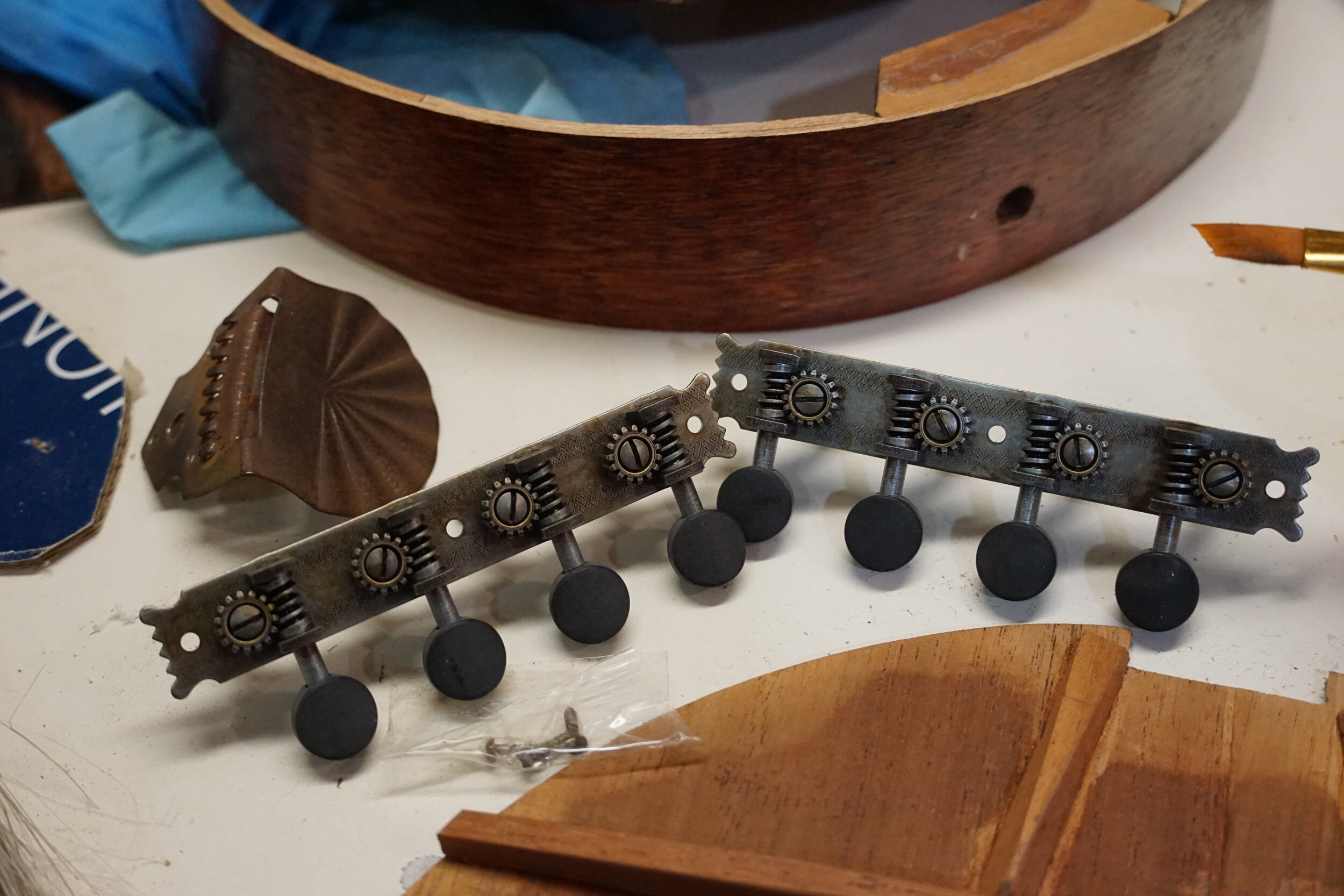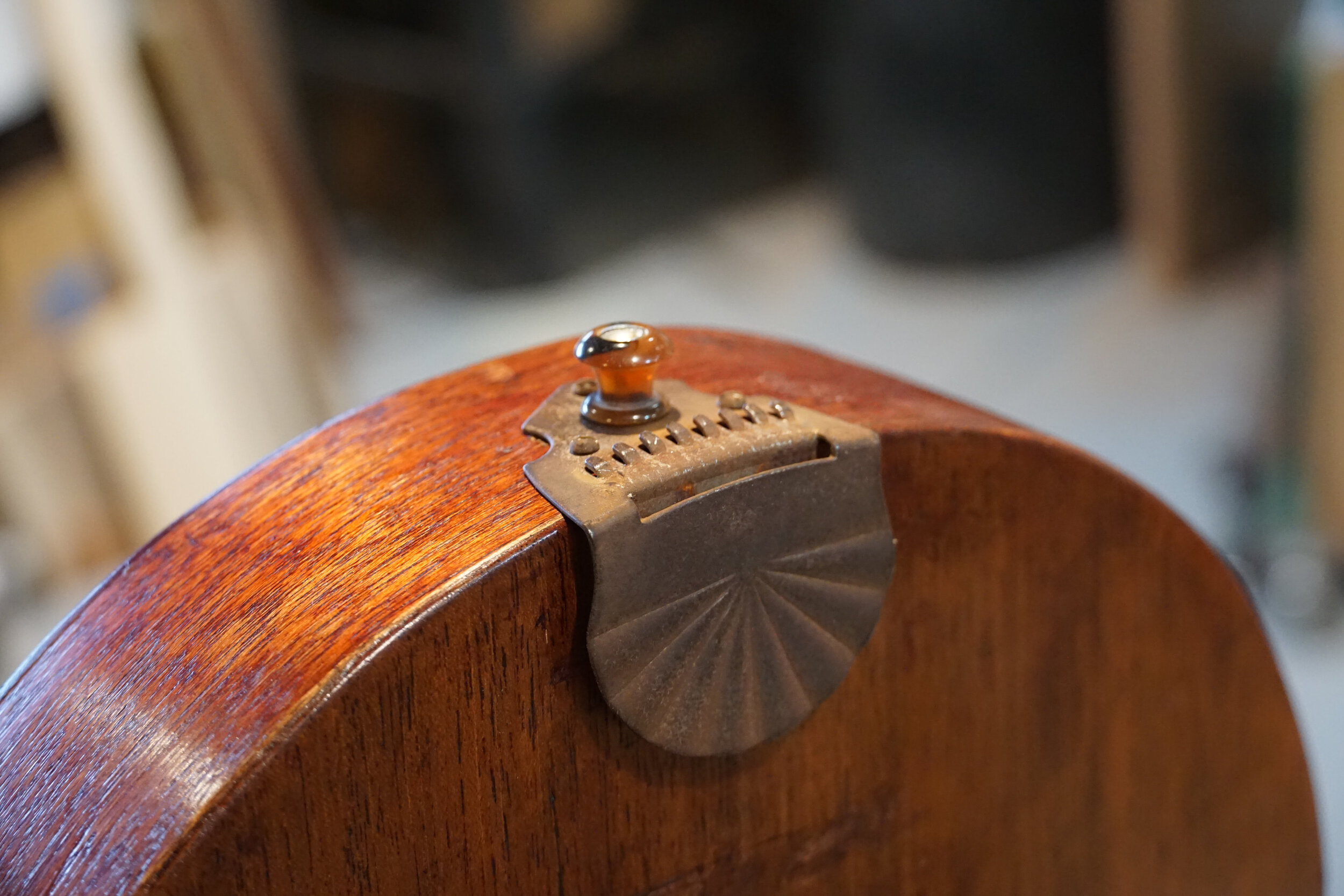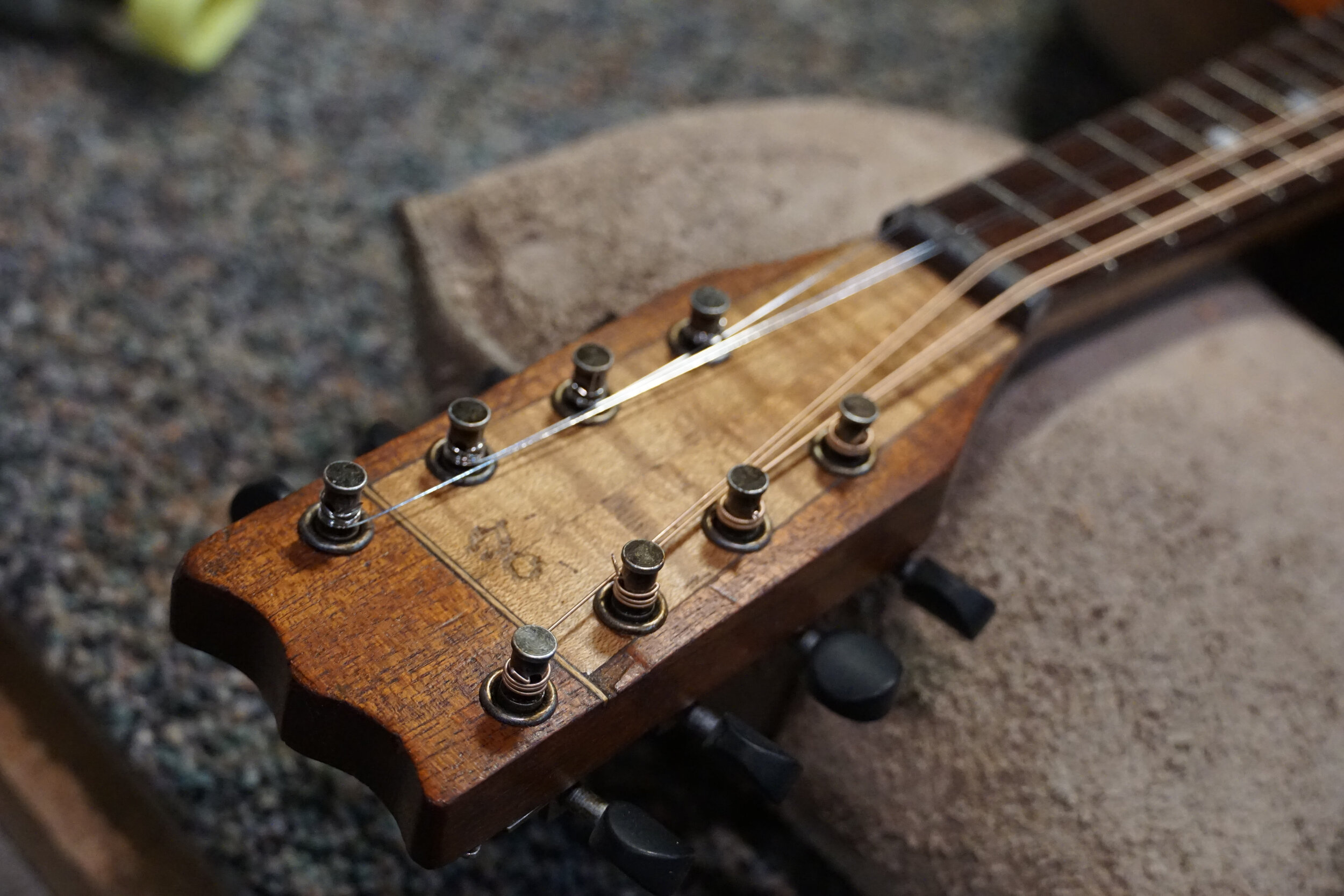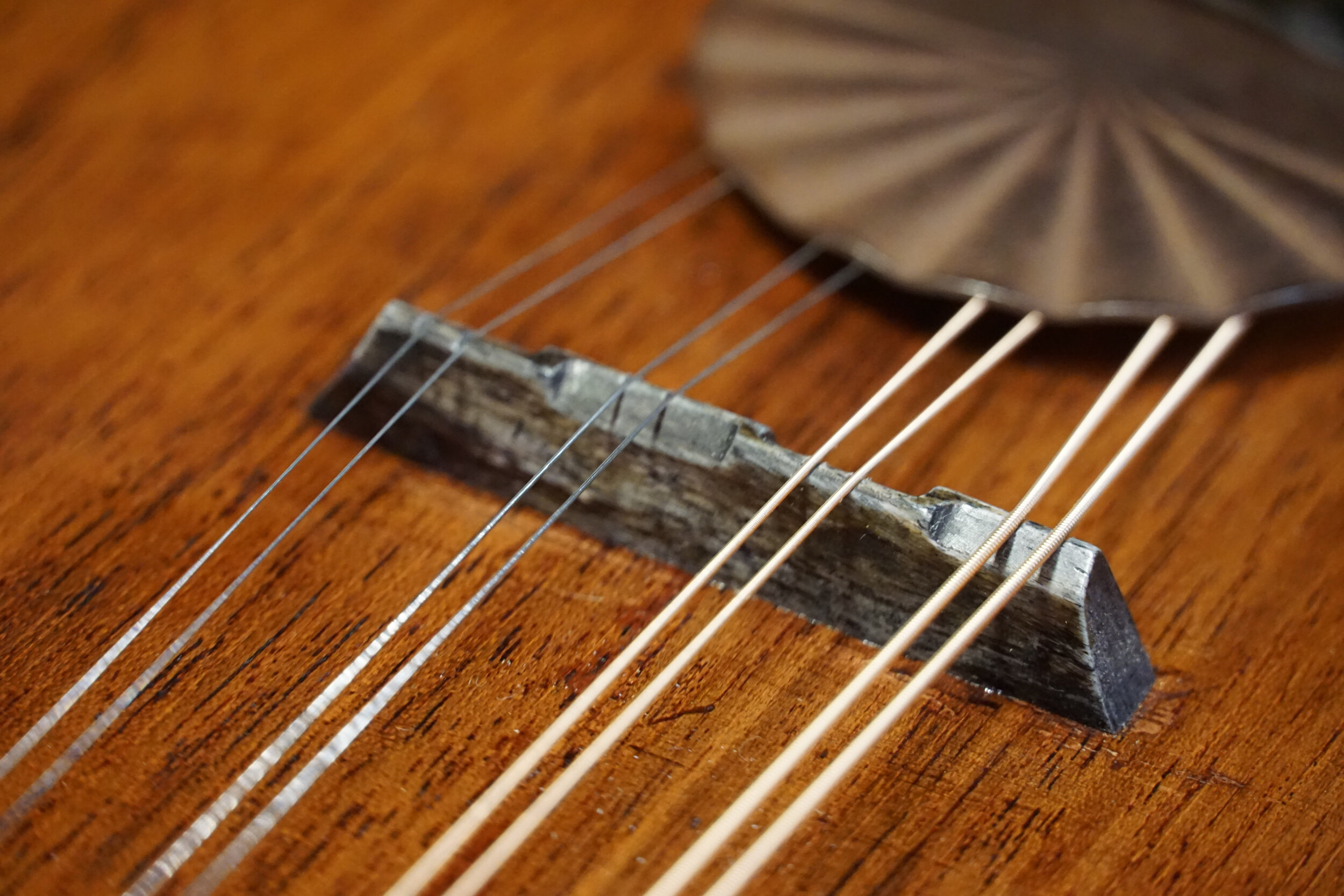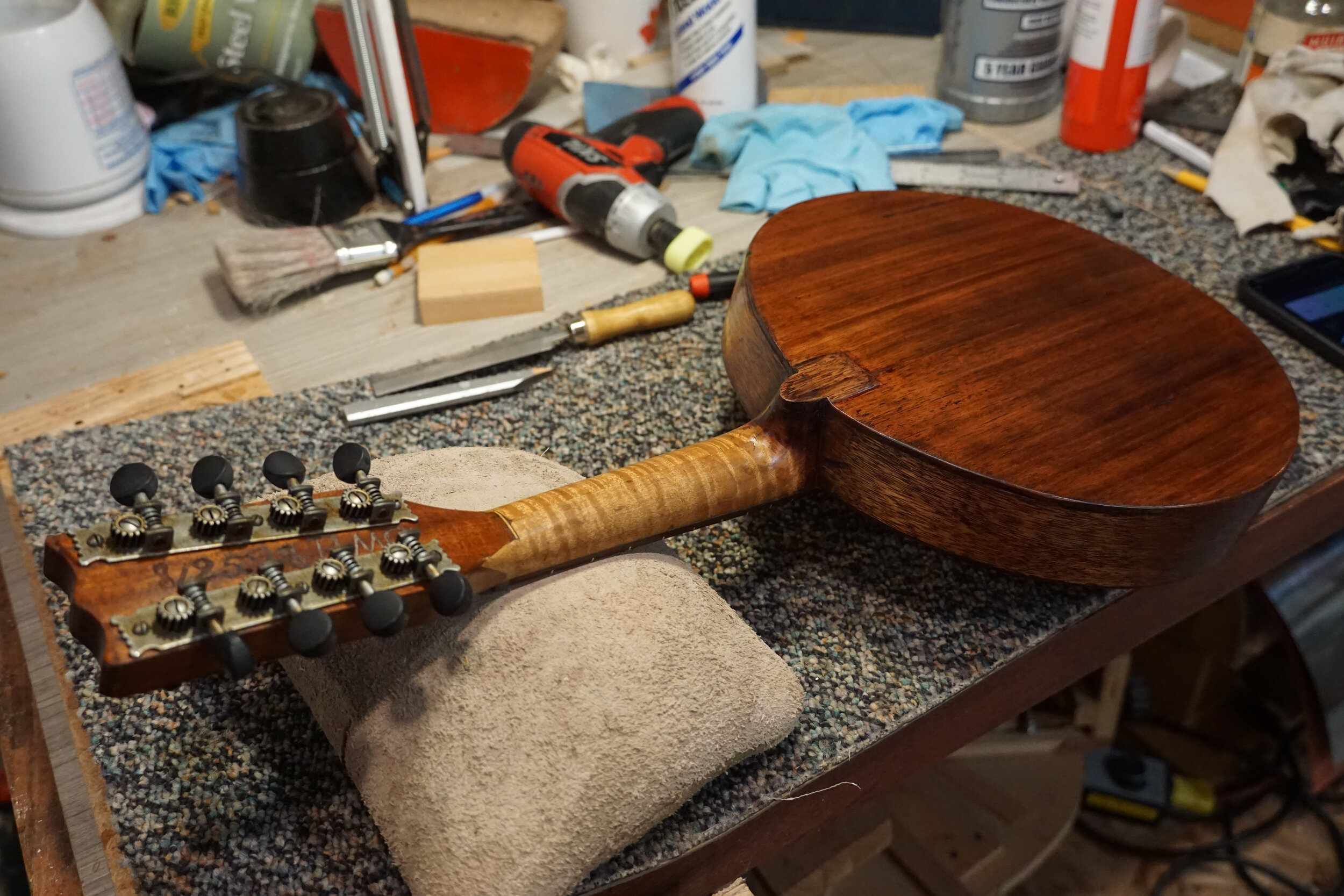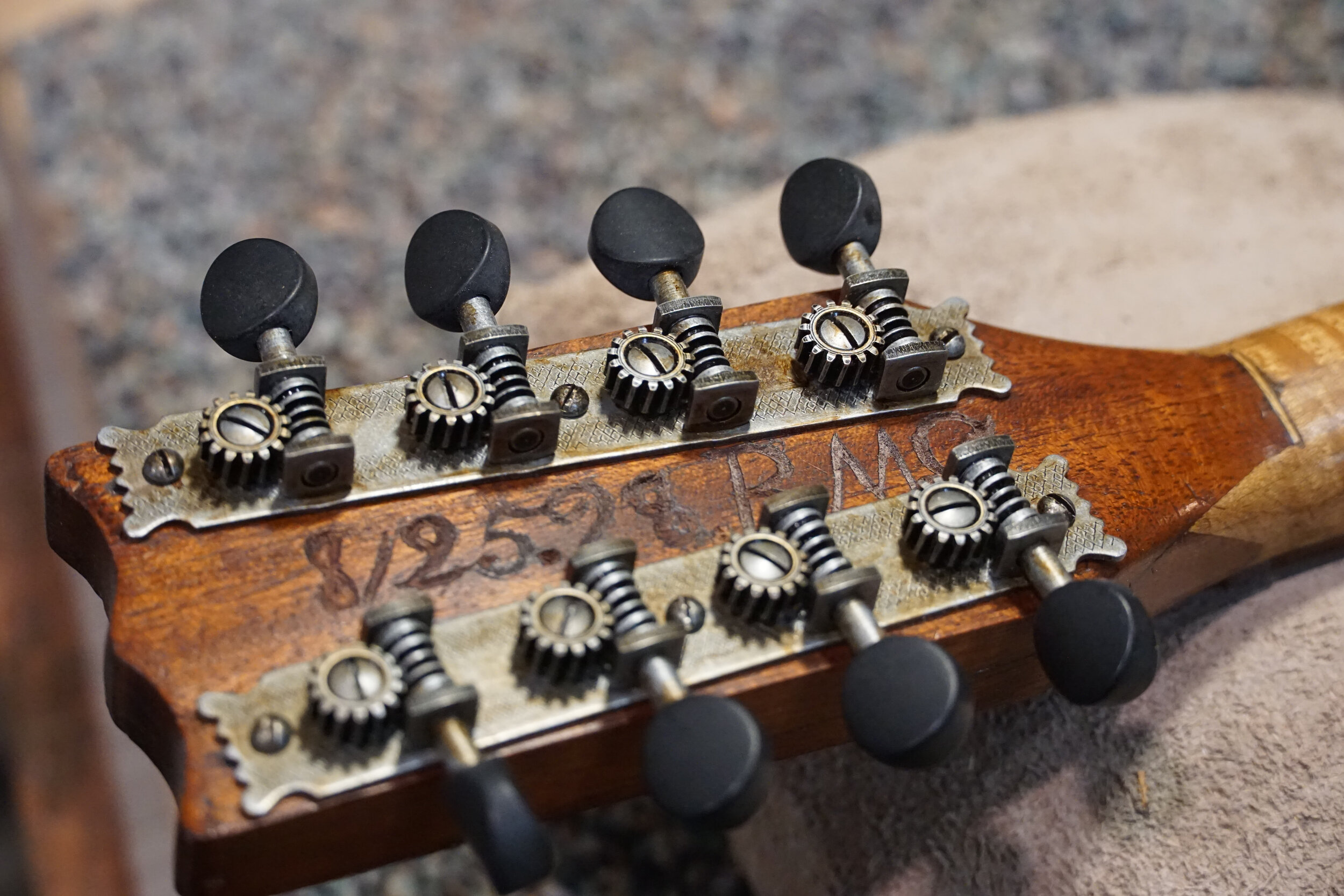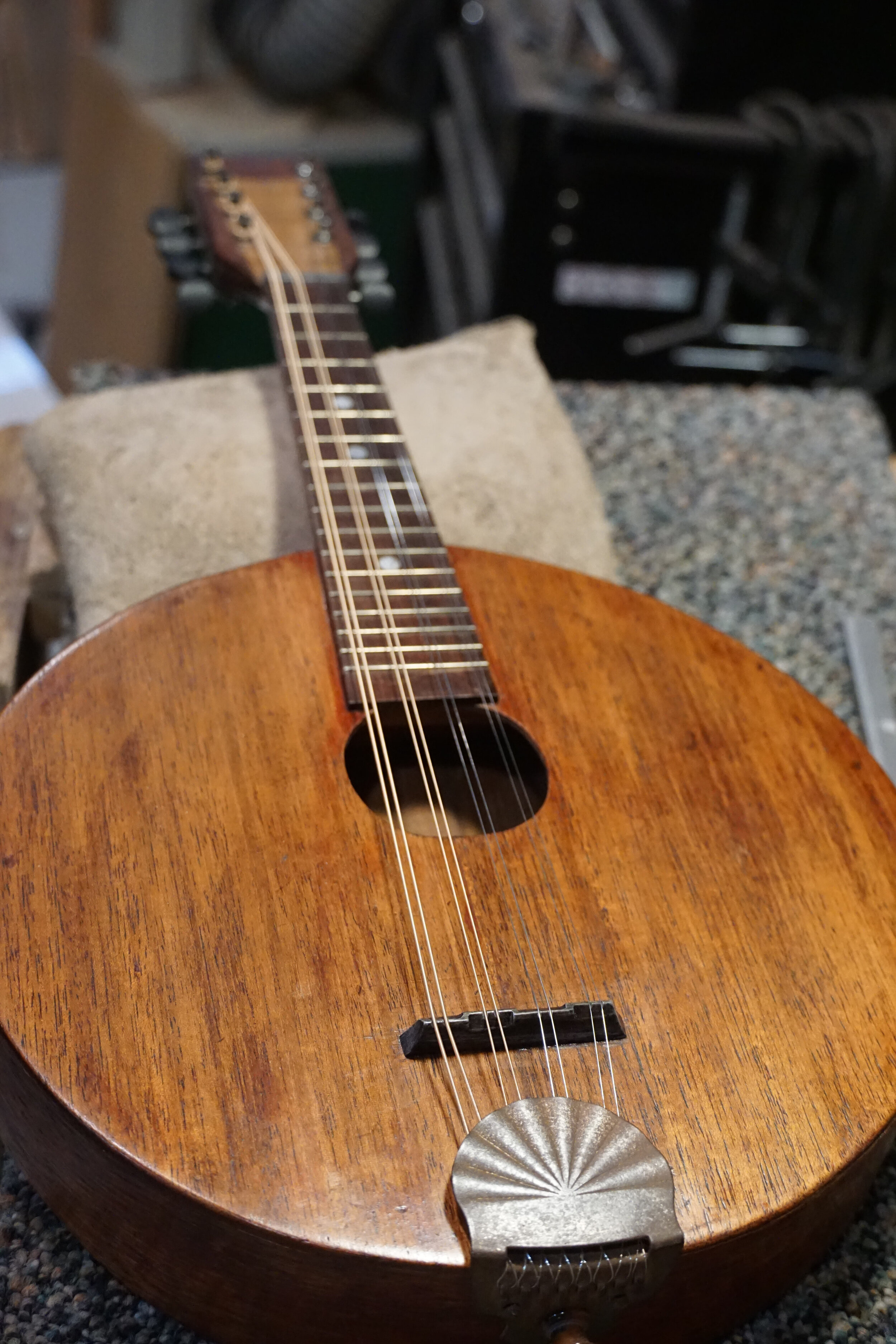I haven’t been doing too many big restoration or rebuild jobs lately but this one turned out well. This one is really fun because the instrument is so odd and also because it’s for a friend. This instrument holds meaning for him as it was made by someone in his family.
It’s a interesting spot to be in when your tasked with restoring an instrument. There is the desire to preserve its originality which is many times opposed to the desire to make it playable. The main desire of the customer was to be able to play it and even though it’s a family heirloom, it wasn’t a collectors item, which makes the restoration less fraught. I tried to keep it as original as possible while keeping in mind that it had failed and fallen apart which meant changing some things were required.
All the glue joints had failed. The top and back had split and the neck joint and fingerboard were loose. The only thing still holding on was the joinery in the headstock. The neck itself looks to be scavenged from another mandolin and then slapped on the mahogany body. Everything got taken apart, cleaned up and reglued. I did replace and strengthen the internal bracing on the top, sides and back a bit; making sure to oxidize the new wood to try and make it look of the same age. I had to splice in some wood on the top and back as the plates had shrunk a bit too much to fit the rim. I feel good about addressing the structural elements without harming any of the exterior marks. There are still the strumming marks on the outside and old pencil marks on the inside but it should be strong enough to hold up for some years now. Anyways, I just got it strung back up and it really sounds great! It has the tiniest bar frets but it plays cleanly. It now has some reproduction style tuning machines that I dirtied up a bit and a new strap button.
